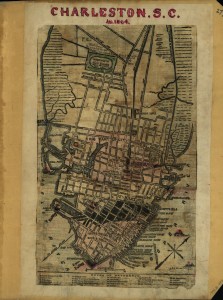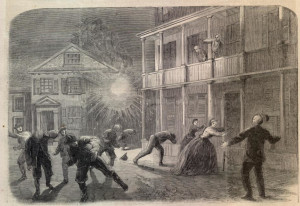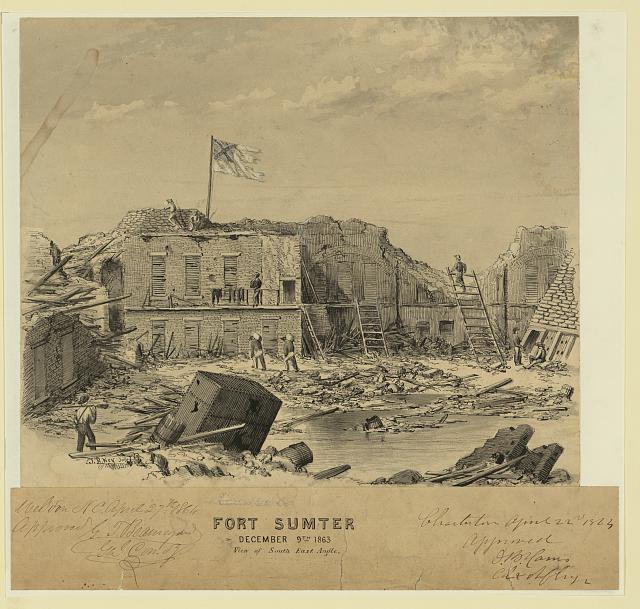It’s already going on three years since the federal garrison at Fort Sumter was evacuated as the shooting war started. But the Union wasn’t content to leave with its tail between its legs. The North had been trying to retake Charleston, that hotbed of secession, and its defiant fort. Since the latter part of 1863 the Federals had been trying to bomb the city and its defenders into submission. They have had little success. As a matter of fact, a Petersburg correspondent found that most of the bombs that hit the city fell in a lightly inhabited area already mostly destroyed by the December 1861 fire
From the Richmond Daily Dispatch January 13, 1864:
The firing into Charleston.
–A letter from Charleston published in the Petersburg Express, speaking of the firing into the city, says:
The enemy’s fire into the city, seems to form almost a complete semi-circle. Beyond a certain point they have not reached. There is no harm, perhaps in saying that their farthest shot has only reached to within a few yards of Beautain street, and that their shortest shot fell in Water street.–Beginning then at Water street, near the battery promenade, and describing a half circle, including the Mills House, Charleston Hotel, and then going down to the bay again, will give you the exact area exposed to the Yankee fire. Many of the huge missiles find a lodging place without harming any one in what is known here as the “Burnt District. ” After all, that frightful conflagration of two years back, was in many respects a God send. It afforded a resting place for Yankee shells — It afforded debris, &c., enough to obstruct six harbors like ours — and material enough for the case work of batteries, bomb proofs, &c., innumerable. I took a stroll through the portion of the city exposed to the shells, two days since. It was an instructive and interesting stroll, though one necessitating some exposure. My way lay first up East Bay to Broad, up Broad to King, up King to Haxel, down Hazel to the Bay and back. Splintered glass, scattered bricks, large holes in the pavement, the perfect desolation and silence of death, all marked the spot as well deserted. No foot fall, save my own, awoke the leaches in the cheerless streets — and when once again I neared the precincts of a busy, breathing population. I sighed, as heaving a mighty weight from my breast. The effect of the shells there is no denying are serious and destructive. But very few strike the houses, and at this rate, years would be consumed in knocking to pieces, even this small portion of the city, exposed to Yankee malice.
The image of the bomb exploding was published in the January 9, 1864 issue of Harper’s Weekly at Son of the South, where you can also see Fort Sumter being shellacked but still in rebel control and read a description. The image in Charleston proper was from back when the bombardment began:
THE SIEGE OF CHARLESTON.
ON page 28 we give an illustration representing the effect produced by one of Gilmore’s shells bursting in the streets of Charleston. When Gilmore first began to shell the city it had more noncombatants in it than it has now; it was not believed that the city was within range until the actual reality brought conviction. The illustration is designed to represent the first occasion upon which the city was shelled, and depicts the overwhelming surprise of the citizens. The shelling commenced at midnight, but did little harm beyond terrifying the ladies left in the city. Only a single house was set on fire. … [and out in the harbor where the bombs are raining down on Sumter] Beauregard, it is said, is determined to hold the fort till the last; by the bayonet, if need be.



